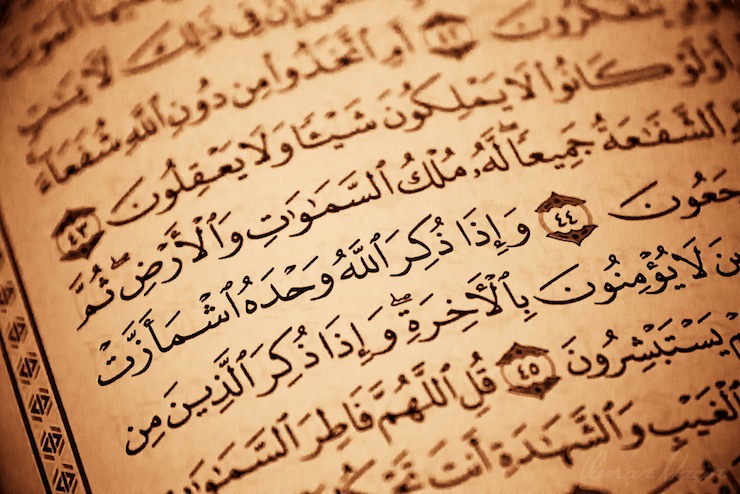(Summary: This article repudiates the allegation that Islam is “the religion of the sword” and that Prophet Muhammad (peace and blessings be upon him) was “a man of the sword”.
It does so by analyzing why and how the Prophet Muhammad fought.
The article concludes that the Prophet’s biggest enemies were falsehood, injustice and oppression. As a mercy for all creation, he was disposed to fighting only for self-defence and when freedom and people’s basic human rights were in grave danger.
Still, he fought only occasionally and briefly, after all other alternatives had been exhausted. Fighting was the last resort and could not be undertaken for any of the vain worldly benefits.
In the process, the Prophet created a remarkable legacy of war ethics, as part of Islamic general ethics. It served as a standard-setter in the fields of conflict and warfare, within which, traditionally, benevolence and rationality are seldom observed.
At the end of the article, “fighting, or war, verses” are also explained.)
Washington Irving (1783-1859), an American writer, historian and diplomat, was among the first who systematically stereotyped Islam as “the religion of the sword” and Prophet Muhammad (peace and blessings be upon him) as “a man of the sword”.
According to him, the Prophet was sent with the sword as “the instrument of Faith”. He taught that those who engaged themselves in promulgating his faith should enter neither into “argument nor discussion; but slay all who refuse obedience to the law”. “The sword is the key of heaven and hell”, the Prophet is alleged to have said to his followers.
Washington Irving wrote this in his book titled “Mahomet and his Successors”. The book has two volumes. The first volume was published in 1849 and the second in 1850.
This book was not an isolated case. It represented a trend and the author was its spokesperson, so to speak. He declares at the beginning of the book’s preface:
“Some apology may seem necessary for presenting a life of Mahomet at the present day, when no new fact can be added to those already known concerning him.”
In other words, the notoriously violent reputation of Islam and its Prophet was a well-established reality. The author was simply re-emphasizing the obvious.
Demonizing Islam and Muslims
The book and the trend it represented were products of a long and concerted campaign against Islam and Muslims. It was a crusade in its own right. The campaign aimed to discredit the ideological foundations of Islamic civilization and cultures and thus pave the way for physical colonization, subjugation and exploitation of the Muslim world.
At the heart of legitimization of those unholy enterprises lay the demonization of Islam and its adherents. Orientalism, as a Western scholarly discipline that flourished especially in the 18th and 19th centuries, was their soul and driving force.
It was held that the Prophet – and with him all Muslims – were wrong and needed to be set right. They and whatever they had defiled needed to be purified and rescued. They needed the Savior and his terrestrial exponents for the purpose.
The Prophet was no more than a false prophet (an impostor) who cunningly deceived multitudes.
On account of all that, the colonization drive was heavily saturated with the spirit of Christianisation, proselytization and westernization – all at once. It was an extension of the Crusades.
Hence, when Field Marshall Allenby captured Jerusalem in 1918 in the name of the Allies, while standing on the steps of the Dome of the Rock, he made a proclamation:
“Today the Crusades have come to an end.”
In the same vein, Peterson Smith, in his book on the life of Jesus, wrote:
“This capture of Jerusalem was indeed an eighth Crusade in which Christianity had finally achieved its purpose” (Haykal).
According to Washington Irving, furthermore, while in Makkah, the Prophet exhorted the people to bear with patience and endure the violence of their enemies, almost emulating the standards established by “our Saviour”.
But upon migrating to Madinah and establishing a state with an army at his command, the Prophet Muhammad, “arrived at a point where he completely diverged from the celestial spirit of the Christian doctrines, and stamped his religion with the alloy of fallible mortality. His human nature was not capable of maintaining the sublime forbearance he had hitherto inculcated.”
It was then and there that the Prophet as “a man of the sword” and Islam “as the religion of the sword” came to the fore.



